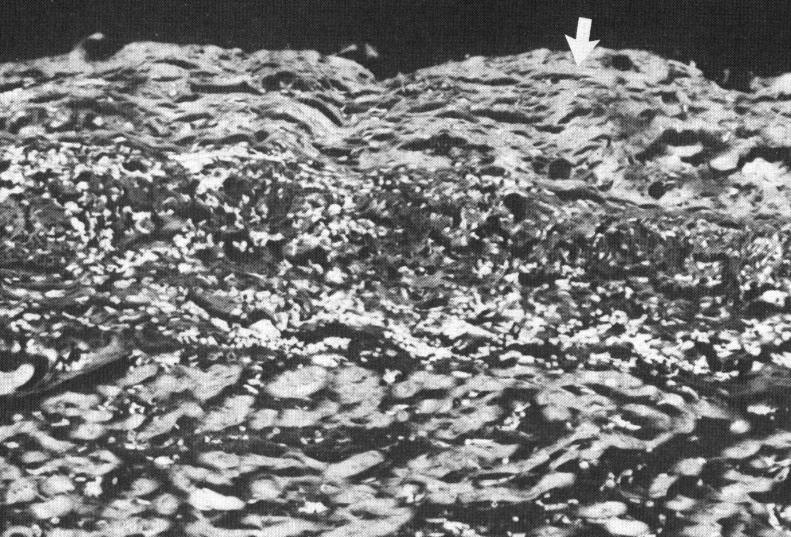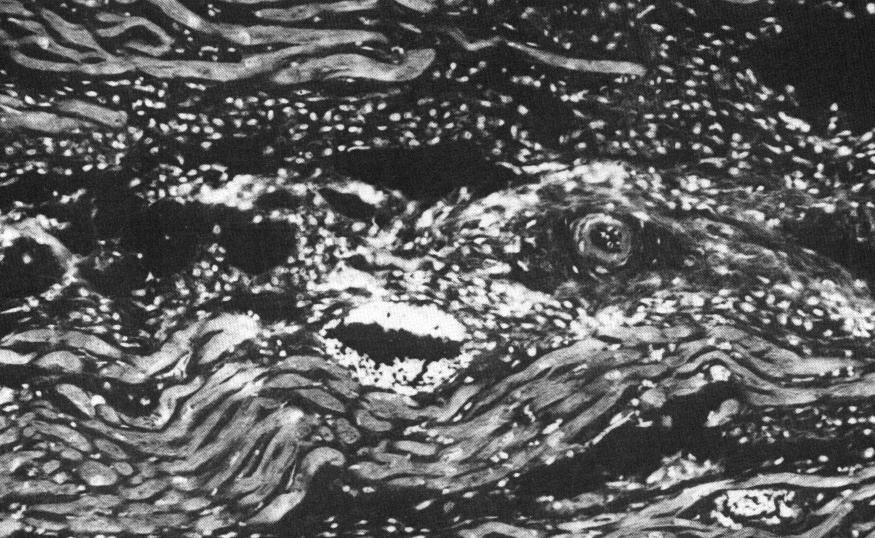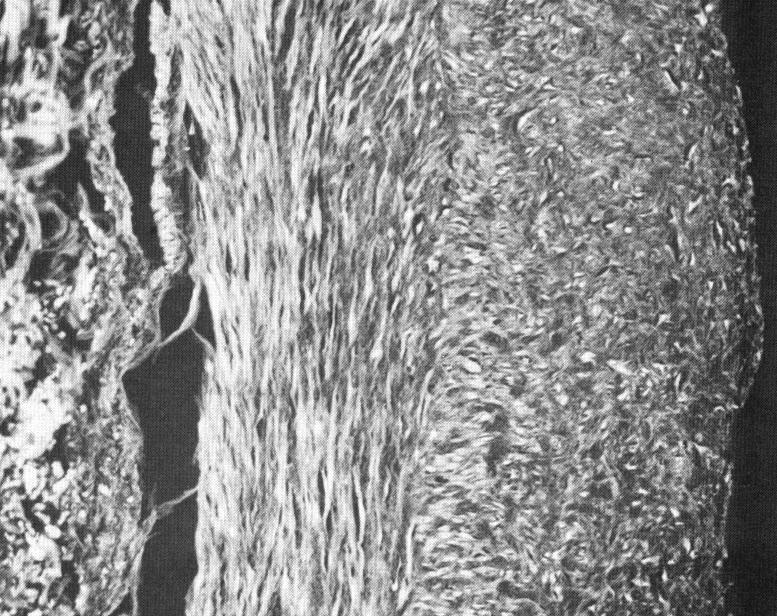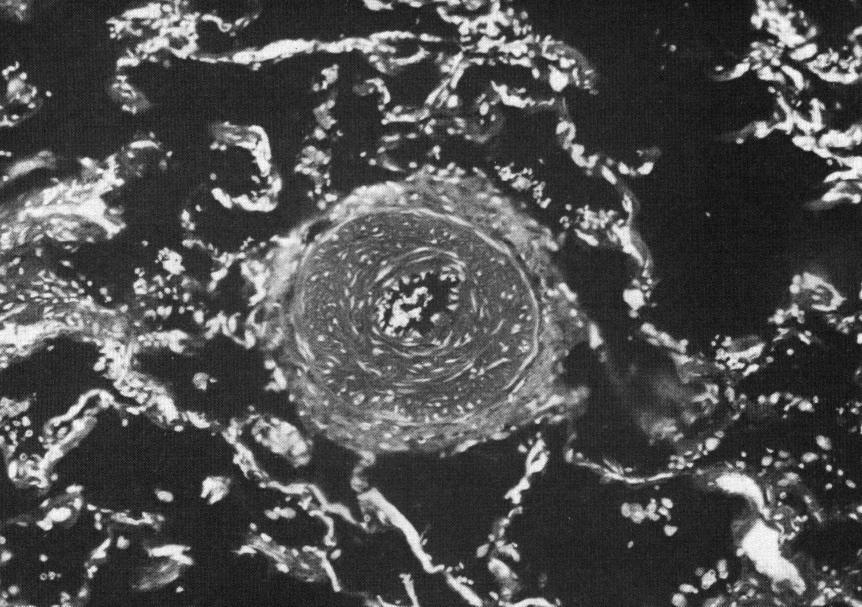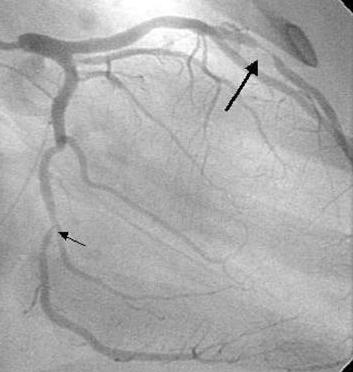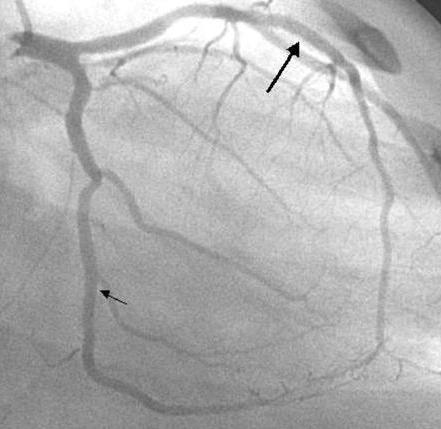Mixed connective tissue disease: Difference between revisions
m (Robot: Automated text replacement (-{{WikiDoc Cardiology Network Infobox}} +, -<references /> +{{reflist|2}}, -{{reflist}} +{{reflist|2}})) |
No edit summary |
||
| Line 1: | Line 1: | ||
__NOTOC__ | |||
{{SI}} | {{SI}} | ||
{{CMG}}; '''Associate Editor:''' {{CZ}} | |||
{{SK}} MCTD; Mixed connective tissue disorder; Sharp's syndrome | |||
==Overview== | ==Overview== | ||
'''Mixed connective tissue disease''' ('''MCTD''') or ''Sharp's syndrome'' is a human [[autoimmune disease]] in which the [[immune system]] attacks the body. MCTD combines features of [[polymyositis]], [[systemic lupus erythematosus]], and [[systemic scleroderma]] and is thus considered an [[overlap syndrome]]. MCTD commonly causes [[arthritis|joint pain/swelling]], [[Raynaud phenomenon]], [[myositis|muscle inflammation]], and [[sclerodactyly|scarring of the skin of the hand]]. It does not typically cause [[kidney]] disease or [[seizure]]s. Distinguishing laboratory characteristics are a positive, speckled [[anti-nuclear antibody]] and an [[anti-U1-RNP antibody]].<ref>Venables PJ. ''Mixed connective tissue disease.'' Lupus. 2006;15(3):132-7. PMID 1663436</ref> | '''Mixed connective tissue disease''' ('''MCTD''') or ''Sharp's syndrome'' is a human [[autoimmune disease]] in which the [[immune system]] attacks the body. MCTD combines features of [[polymyositis]], [[systemic lupus erythematosus]], and [[systemic scleroderma]] and is thus considered an [[overlap syndrome]]. MCTD commonly causes [[arthritis|joint pain/swelling]], [[Raynaud phenomenon]], [[myositis|muscle inflammation]], and [[sclerodactyly|scarring of the skin of the hand]]. It does not typically cause [[kidney]] disease or [[seizure]]s. Distinguishing laboratory characteristics are a positive, speckled [[anti-nuclear antibody]] and an [[anti-U1-RNP antibody]].<ref>Venables PJ. ''Mixed connective tissue disease.'' Lupus. 2006;15(3):132-7. PMID 1663436</ref> | ||
==Pathophysiology== | |||
There are no specific histologic findings that aid in the diagnosis of [[Mixed Connective Tissue Disorder]] as a separate autoimmune disease. For example, [[nephritis]] in [[MCTD]] is usually indistinguishable from [[lupus]] nephritis. | |||
<div align="left"> | |||
<gallery heights="225" widths="225"> | |||
image:Fibrous Pericarditis in MCTD.jpg|Fibrous Pericarditis in MCTD | |||
image:Cellular aggregates in perivascular space and adjacent myocardium.jpg|Cellular aggregates in perivascular space and adjacent myocardium | |||
image:Cross Section of Intramural Coronary Artery.jpg|Cross Section of Intramural Coronary Artery | |||
image:Small pulmonary artery in patient with MCTD and pulmonary hypertension.jpg|Small pulmonary artery in patient with MCTD and pulmnonary hypertension | |||
</gallery> | |||
</div> | |||
==Diagnosis== | |||
*[[Raynaud’s phenomenon]] | |||
*Swollen fingers or hands | |||
===Anti–U1 small nuclear RNP positive=== | |||
===Mixed Connective Tissue Disorder Findings=== | |||
A.[[Systemic lupus erythematosus]]–like findings | |||
*[[Polyarthritis]] | |||
*[[Lymphadenopathy]] | |||
*Facial [[erythema]] | |||
*[[Pericarditis]] or [[pleuritis]] | |||
*[[Leukopenia]] (<4,000/mm3) or thrombocytopenia (<100,000/mm3) | |||
B.[[Scleroderma|Progressive Systemic Sclerosis]] –like findings | |||
*[[Sclerodactyly]] | |||
*[[Pulmonary fibrosis]], restrictive changes of the lung (forced vital capacity <80% of predicted), or reduced carbon monoxide diffusing capacity (<70% of predicted) | |||
*Hypomotility or dilatation of esophagus | |||
C.[[Polymyositis]]-like findings | |||
*Muscle weakness | |||
*Elevated serum level of muscle enzymes (creatine kinase) | |||
*Myogenic pattern on electromyogram | |||
MCTD is characterized by anti–U1 small nuclear RNP positivity. | |||
===Cardiac Involvement in MCTD=== | |||
Cardiovascular abnormalities associated with mixed connective tissue disease are rare. Presence of any of the complications listed below indicates unfavorable prognosis; | |||
*Acute [[pericarditis]] and/or [[pericardial effusion]], | |||
*[[Mitral valve prolapse]], | |||
*Intimal hyperplasia of coronary arteries, | |||
*Perivascular and myocardial leukocytic infiltrates, | |||
*[[Pulmonary hypertension]]. | |||
*Coronary Artery Disease (although it is rarer, ACS may occur secondary to vascular changes and underlying CAD. The youngest patient with MCTD and ACS in literature was 18 years old)<ref>Jang J J, Olin J W, Fuster V. A teenager with mixed connective tissue disease presenting with an acute coronary syndrome. Vascular Medicine; 2004, Vol. 9 Issue 1, 31-34</ref> | |||
<div align="left"> | |||
<gallery heights="225" widths="225"> | |||
image:Teenager before PCI.jpg|A teenager with MCTD presented as ACS before PCI | |||
image:Teenager post PCI.jpg|A teenager with MCTD presented as ACS post PCI | |||
</gallery> | |||
</div> | |||
== References == | == References == | ||
{{reflist|2}} | {{reflist|2}} | ||
[[Category:Diseases involving the fasciae]] | [[Category:Diseases involving the fasciae]] | ||
[[Category:Rheumatology]] | [[Category:Rheumatology]] | ||
[[Category:Cardiology]] | |||
[[fr:Syndrome de Sharp]] | [[fr:Syndrome de Sharp]] | ||
Revision as of 18:21, 2 November 2012
Editor-In-Chief: C. Michael Gibson, M.S., M.D. [1]; Associate Editor: Cafer Zorkun, M.D., Ph.D. [2]
Synonyms and keywords: MCTD; Mixed connective tissue disorder; Sharp's syndrome
Overview
Mixed connective tissue disease (MCTD) or Sharp's syndrome is a human autoimmune disease in which the immune system attacks the body. MCTD combines features of polymyositis, systemic lupus erythematosus, and systemic scleroderma and is thus considered an overlap syndrome. MCTD commonly causes joint pain/swelling, Raynaud phenomenon, muscle inflammation, and scarring of the skin of the hand. It does not typically cause kidney disease or seizures. Distinguishing laboratory characteristics are a positive, speckled anti-nuclear antibody and an anti-U1-RNP antibody.[1]
Pathophysiology
There are no specific histologic findings that aid in the diagnosis of Mixed Connective Tissue Disorder as a separate autoimmune disease. For example, nephritis in MCTD is usually indistinguishable from lupus nephritis.
-
Fibrous Pericarditis in MCTD
-
Cellular aggregates in perivascular space and adjacent myocardium
-
Cross Section of Intramural Coronary Artery
-
Small pulmonary artery in patient with MCTD and pulmnonary hypertension
Diagnosis
- Raynaud’s phenomenon
- Swollen fingers or hands
Anti–U1 small nuclear RNP positive
Mixed Connective Tissue Disorder Findings
A.Systemic lupus erythematosus–like findings
- Polyarthritis
- Lymphadenopathy
- Facial erythema
- Pericarditis or pleuritis
- Leukopenia (<4,000/mm3) or thrombocytopenia (<100,000/mm3)
B.Progressive Systemic Sclerosis –like findings
- Sclerodactyly
- Pulmonary fibrosis, restrictive changes of the lung (forced vital capacity <80% of predicted), or reduced carbon monoxide diffusing capacity (<70% of predicted)
- Hypomotility or dilatation of esophagus
C.Polymyositis-like findings
- Muscle weakness
- Elevated serum level of muscle enzymes (creatine kinase)
- Myogenic pattern on electromyogram
MCTD is characterized by anti–U1 small nuclear RNP positivity.
Cardiac Involvement in MCTD
Cardiovascular abnormalities associated with mixed connective tissue disease are rare. Presence of any of the complications listed below indicates unfavorable prognosis;
- Acute pericarditis and/or pericardial effusion,
- Mitral valve prolapse,
- Intimal hyperplasia of coronary arteries,
- Perivascular and myocardial leukocytic infiltrates,
- Pulmonary hypertension.
- Coronary Artery Disease (although it is rarer, ACS may occur secondary to vascular changes and underlying CAD. The youngest patient with MCTD and ACS in literature was 18 years old)[2]
References
nl:Mixed connective tissue disease sv:Mixed Connective Tissue Disease
